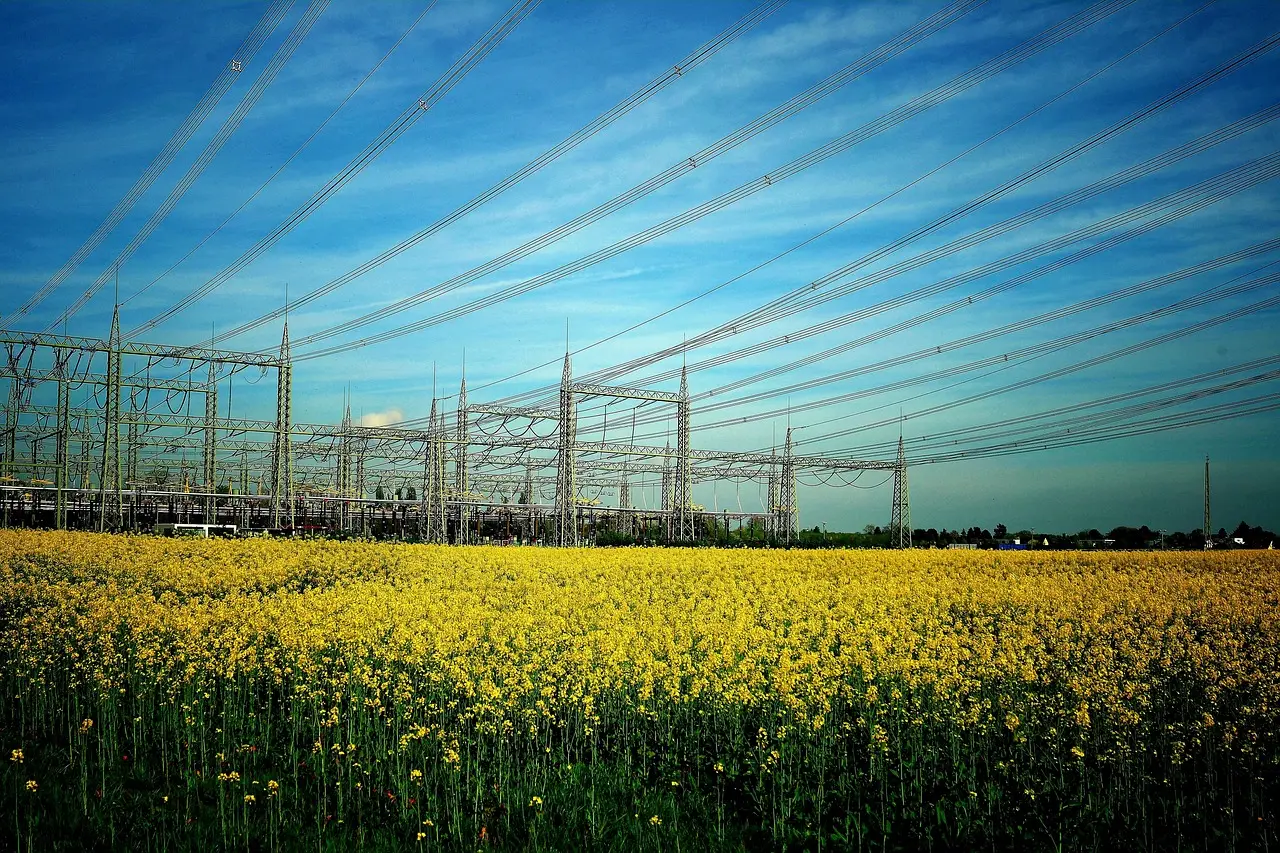Heatwaves in Australia are usually accompanied by a significant increase in electricity consumption. This is mainly due to the increase in air conditioner use over the last two decades. In Australia, there are now 6.7 million air conditioners in households. This is up from 1.9 million in 1990. Air conditioners are working at full capacity simultaneously, resulting in a surge in electricity consumption as businesses and households try to stay cool.
Australians have one of the world’s most reliable electricity supply systems. In the past, heatwaves have been linked to increased risks of power outages. Therefore, consumers want to make sure they can get electricity when they need it.
Understanding What Heatwaves Are
A heatwave is defined as a period with unusually high temperatures at both the maximum and minimum for three days or more in a particular location. The local climate and weather conditions will determine what counts as a “heatwave”. Heatwaves are also a result of high temperatures overnight, which prevent people from cooling off and cause stress to infrastructure and health.

Heatwaves are characterised by varying degrees of severity.
Low-intensity heatwaves,
Most people can manage low-intensity, but uncomfortable heatwaves. The body can cope with high temperatures during these periods if you stay hydrated, don’t overdo physical activity and have cooling available. Even low-intensity hot spells can affect productivity and cause minor health issues such as heat stress or dehydration. They also increase energy consumption because households use more fans and air conditioners.
Severe Heatwaves
A severe heatwave, on the contrary, poses a greater threat to vulnerable groups, such as the elderly and children with chronic illnesses. They may have difficulty regulating their body temperature, which makes them more susceptible to heatstroke or heat exhaustion. Severe heatwaves that are severe can hurt community services. They may lead to increased hospital admissions, more ambulance calls, and a greater strain on the healthcare system. The risks are higher in rural and regional areas where there may be limited access to cooling infrastructure and medical support
Extreme heat waves
Extreme heatwaves are the most dangerous heat events, and pose serious risks to not only vulnerable populations but also to everyone. Even healthy people are susceptible to dehydration and heat-related illnesses, or even death, if they do not take the proper precautions. Extreme heatwaves are not only dangerous to human health but also put enormous strain on infrastructure such as electricity grids, transport networks and healthcare facilities. Trains and roads may be affected by high demand. Hospitals may also be overrun with heat-related emergencies. People who work outdoors, athletes and those living in homes with poor insulation are at high risk. Climate change is expected to increase the frequency and intensity of extreme heat events.
Heatwaves are usually caused by high-pressure systems that push hot air into a particular region for several days. Factors such as the urban heat island effect and climate patterns, like El Niño, can worsen this effect. The long-term climate changes are also increasing heatwave frequency and intensity by raising background temperatures. Heatwaves are most common during summer but can occur even in cooler months. They can damage crops and disrupt natural systems.
Why is it important to understand the Heatwaves in Australia?
Extreme heat can have serious effects on human health, infrastructure and the environment. In the summer of 2023-24, extreme heat conditions affected a large part of Australia. These were exacerbated by heavy rain and damaging winds. These events caused power outages and disruptions to energy infrastructure in several regions.
Power outages and heatwaves are dangerous together. The cooling system cannot function without electricity, resulting in dangerously high temperatures inside. The situation is particularly dangerous for those with health conditions, older adults and children.
Despite the limited number of quantitative data available on heatwaves combined with power outages, there are strong indications that this overlapping challenge poses significant risks for communities. Understanding heat vulnerability, therefore, is essential. It helps identify the groups most at risk of extreme weather and provides strategies for strengthening resilience.
Incoming Heatwaves Problems
During heatwaves, electricity demand can exceed supply. It usually occurs in the evenings, when many families return home to turn on the air conditioning at the same time.
The demand for air conditioning increases during hot days when buildings retain heat, and the air conditioners are forced to work more. Demand also increases on weekends and mid-January, when businesses and schools return to work after the holidays.
Demand can cause the grid to be unstable in extreme situations. Operators may use “load-shedding” to prevent widespread outages. This involves temporarily cutting off power in certain areas to balance the system. In the past, high temperatures and reduced generation capacity have triggered such measures. Heatwaves can also put stress on the infrastructure. Heatwaves can also put stress on infrastructure.

Bushfire Threat
Bushfires increase the risk of the electricity supply. Solar energy, both from large-scale systems and rooftop systems, plays an important role in the generation of energy. However, smoke particles released by fires can block or scatter sunlight. The amount of sunlight reaching the panels is reduced, resulting in a significant drop in production.
Solar generation in the affected areas can fall by as much as half during severe fire seasons. This can lead to significant losses in energy production over the course of a season. Solar panels can be further reduced in efficiency by dust and ash left on them after a fire.
Bushfires are not only a threat to solar power, but they can also damage important infrastructure, such as transmission towers and substations. These can cause blackouts in entire regions, making it more difficult to maintain a stable grid.
Heatwaves and bushfires are expected to be a major issue for Australia’s electricity supply in the coming summers.
Concerns about the Blackouts to Come
The Australian electricity grid is under increasing pressure during summer heatwaves, as businesses and households rely more on air conditioners. The grid is vulnerable to instability when this surge in demand coincides with a reduction in generation capacity. Lack of Reserve (LOR), or Lack of Reserve notices, are issued by authorities to manage this risk when energy reserves drop below safe levels. A LOR 3 alert, the highest level of alert, indicates that load-shedding or controlled blackouts may be necessary to prevent system collapse.
Extreme heat can affect both the reliability of supply and demand. In hot weather, coal-fired power stations, which are still a major source of electricity, can experience breakdowns and reduced efficiency. When several units are not in operation during periods of peak demand, the grid is put under more strain, increasing the risk of blackouts.
Climate change contributes to more intense heat waves, which are longer and more frequent. This trend increases the likelihood of widespread power failures, which can be a problem for households and industry. Grid resilience requires ongoing investments in renewable energy solutions, storage and infrastructure that can withstand extreme conditions.
Why Could There Be Blackouts?
Heatwaves in Australia place a huge strain electrical system, especially in the evenings and late afternoons when demand is at its peak. Heatwaves cause a surge in electricity demand as households and businesses rely heavily on air conditioning. This surge in electricity consumption can overload the grid, particularly when it occurs at the same time as other challenges like reduced production from coal and gas plants. This can lead to a higher risk of blackouts that could leave thousands without electricity at a time when they are most in need of cooling.
Extreme heat can also hurt the performance of energy systems. Under sustained temperatures, generators, transmission lines and substations may experience reduced performance or even fail. The balance between supply and consumption becomes extremely fragile when combined with maintenance or planned maintenance at large coal-fired power plants. Recently, this was seen in New South Wales, Queensland and Australia, where there were concerns that planned generator outages could push the system to its limit, causing widespread power cuts.
Blackouts in heatwaves can have severe consequences for Australians. Without reliable cooling, groups at risk of heat stress, such as the elderly and children, or those with medical conditions, are more likely to suffer heat-related illnesses. Power disruptions hurt businesses, transportation systems, and other essential services. This has a significant social and economic impact. Climate change will lead to longer and more intense hot weather, which increases the risk of blackouts. This is why we need a more resilient energy system.
What are the causes of summer blackouts in Australia?
Extreme heatwaves will put an unprecedented strain on Australia’s electricity grid, especially in 2025. Combining high temperatures with a surge in demand for cooling devices, like air conditioners, can overwhelm the energy infrastructure of Australia. The problem is made worse because of an older fleet of coal-fired stations, which are more prone to breakdowns in extreme weather conditions.
The recent milder seasons have masked Australia’s fragile energy system. While Australia has hot summers, they are not uncommon. Heatwaves in Australia cause an increase in demand for electricity during late afternoons and early evenings, as businesses and households all need cooling. High temperatures also reduce the efficiency and reliability of coal and natural gas plants. Transmission lines sag, and the power can’t be moved safely across the grid.
Solar energy can also underperform during summer bushfires or when dense smoke and haze block sunlight. Wind power is also less prevalent during heatwaves, as they tend to coincide when the weather is of still weather. These factors make the system vulnerable to blackouts. Australians could face power shortages more frequently during summer peak heat unless grid infrastructure is upgraded and energy storage solutions expanded.

How Australia is Preparing for the Energy Challenges of Extreme Heat?
Australia is increasingly focusing on preparing its energy system and communities for the challenges heatwaves will bring. The hotter summers are driving up the electricity demand. This is mainly due to air conditioners being used more. It’s becoming increasingly apparent that energy supply cannot solve this problem. The country has adopted a multi-layered strategy that includes changes to the grid, smarter home and city design, and long-term adjustments in farming and land usage.
Our built environment and our homes play a vital role in relieving pressure on the grid during heatwaves. Urban design changes, such as increasing the amount of green space, using light-colored or reflective materials, and expanding green spaces, can help reduce “urban heat islands” where cities absorb more heat. Designing homes to be naturally cooler–through better insulation, ventilation, shading and strategic orientation- helps reduce the reliance on energy-intensive cooling systems. These strategies protect the health and comfort of residents, but they also help prevent spikes in demand for energy that can strain the grid when extreme heat is present.
Australia’s agricultural sector is being adapted to the rising temperatures of climate change and its wider impacts. Farmers are experimenting with more resilient crops that can withstand hotter and drier conditions. They also use water-efficient irrigation techniques, as well as adopting new methods to protect livestock against extreme heat. These measures are important not only for food security but also to make sure that energy resources in agriculture are used more efficiently. Agriculture is a large energy-consuming industry. Australia’s energy planning is integrated with urban design, agricultural practices, and climate-resilient strategies to prepare it for the risks of longer and more intense hot weather.
Conclusion
Heatwaves in Australia place enormous pressure on people and energy grids. Demand for electricity reaches record levels because households and businesses are heavily reliant on cooling systems. The combination of this surge in demand, coupled with the risks of outages of power generation and strain on infrastructure, creates real blackout threats and highlights the vulnerability and fragility of Australia’s electricity supply during extreme weather.
Australia has taken steps to prepare for these challenges by investing in renewable energies, strengthening its energy system, and adapting cities, homes, and farming methods to cope with the rising temperatures. Essential steps include designing buildings to stay cooler by nature, reducing urban heat islands, and exploring more efficient irrigation and farming methods. These strategies help to reduce energy consumption during heatwaves, but they also improve long-term community resilience.


